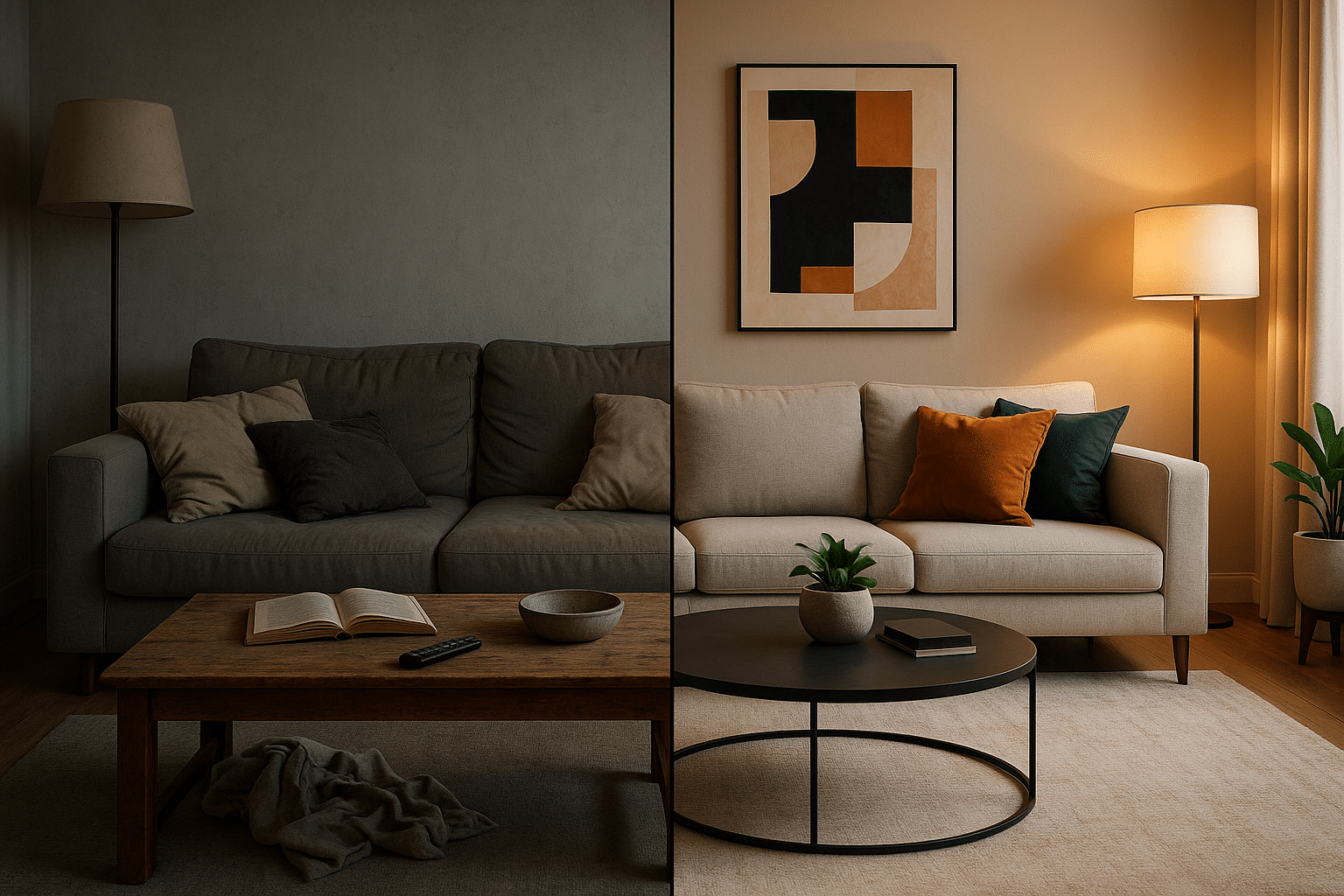Imagine the power to transform any space in just 30 seconds. Sounds like a fantasy? It’s not. In fact, it’s an art and science that you can master. This transformation not only gives an instant “wow” effect but also enhances the functionality and aesthetics of your space. In this comprehensive article, we’ll walk you through the process of mastering 30-second transitions for instant wow effect. So brace yourself for a fascinating journey of transformation! 🚀
First, we will delve into what exactly are these 30-second transitions, and why they are so impactful in transforming spaces. We’ll also explore the psychology behind these quick changes, and how they can influence the mood and productivity of people inhabiting the space. 💡
Then, we will guide you step-by-step on how to apply these transitions effectively. Whether you are aiming to revamp your living room, workspace, or even your digital desktop, these quick transition techniques are equally applicable. Moreover, these transitions can be adapted to suit different styles, preferences, and requirements. That means there’s something for everyone here. 🛠️
💠 Understanding 30-Second Transitions 💠
Before jumping into the “how-tos”, it’s essential to understand the core concept behind 30-second transitions. It’s not about performing magic tricks or overhauling the entire space. Instead, it’s about making subtle changes that can have a significant impact on the space’s look and feel. In the coming sections, we will dissect the science behind these transitions and why they are so effective. 🧠
🔎 The Psychology Behind Quick Changes 🔎
Our environment plays a crucial role in our mood and productivity. That’s why when you change your surroundings, even slightly, it can significantly affect how you feel and perform. This section will delve deeper into the psychological aspects of quick transitions and how they can create an instant wow effect. 🌈
🔧 Applying 30-Second Transitions Effectively 🔧
Once you understand the concept and psychology behind quick transitions, the next step is to put this knowledge into practice. This section will provide you with practical tips and techniques to implement these 30-second transitions effectively, regardless of the type of space you are dealing with. Get ready to transform your surroundings like a pro! 💪
At the end of this article, we hope that you’ll not only understand the significance of 30-second transitions but also be able to apply them effectively in your own spaces. This knowledge can help you in creating an environment that not only looks stunning but also promotes positivity and productivity. So, let’s dive in and embark on this exciting journey of transformation together! 🌟
Unleash Your Inner Designer: Understanding the Basics of 30-Second Transitions
Transforming a space may seem like a daunting task that requires ample time, considerable resources, and extensive planning. However, what if we told you that you could radically alter your environment in just 30 seconds? Sounds too good to be true? Well, buckle up because you’re about to embark on an eye-opening journey into the world of 30-second transitions. Before we dive into the practical aspects, let’s first establish a firm understanding of what these transitions are.
30-second transitions refer to quick, efficient, and cost-effective techniques to spruce up your space. These changes are not meant to be extensive renovations; rather, they are small modifications that can significantly impact the ambiance, functionality, and aesthetics of your area. Imagine being able to flip the mood of a room or office from bland to wow, from uninspiring to motivating, all in just half a minute. That’s the magic of 30-second transitions.
While the concept may be simple, the execution requires a keen eye for design, a flair for creativity, and a touch of practicality. Fortunately, these are skills that can be honed with practice and guidance. To get you started, watch this informative YouTube video titled “30-Second Interior Design Tricks” by Home Edit. It provides a plethora of handy tips and tricks to master quick transitions effectively.
30-Second Transition Techniques: A Comparative Analysis
Now that we’ve covered the basics let’s delve deeper into the different techniques you can use to perform 30-second transitions. Remember, the effectiveness of each method depends on the nature of your space and your personal preferences. Therefore, it’s essential to understand each technique’s nuances to determine which ones are best suited for you.
| Technique | Description | Best For |
|---|---|---|
| Lighting Adjustments | Manipulating the lighting in a room can drastically alter its mood. This can be as simple as dimming the lights, opening the curtains to let in natural light, or changing the color of your LED lights. | Setting a specific mood or ambiance |
| Repositioning Furniture | Moving furniture around can change the flow and functionality of a space. It can also highlight different aspects of the room. | Improving room layout and functionality |
| Adding Accessories | Adding or changing accessories such as cushions, rugs, artwork, or plants can add color, texture, and character to a room. | Enhancing visual appeal |
Please refer to the table above for a quick comparison of the techniques. For a more detailed explanation and practical demonstration, check out the video “30-Second Transition Techniques: A Comparative Analysis” by DesignDuo on YouTube.
Maximizing the Impact of Your 30-Second Transitions
Performing a 30-second transition is one thing; maximizing its impact is another. How do you ensure that your quick changes make the most significant possible difference? Here are three tips to keep in mind:
- Know your space: Understanding the dimensions, layout, and current setup of your space is crucial. It will help you identify which areas need improvement and which transition techniques would work best.
- Align with your style: Ensure your transitions align with your personal style and the overall aesthetic of your space. Consistency is key in design.
- Experiment: Don’t be afraid to try different things. The beauty of 30-second transitions is that they are quick and easy to undo if you don’t like the result.
To further enhance your skillset, watch the YouTube video titled “Maximizing the Impact of Your 30-Second Transitions” by StyleMaster. It offers insightful tips and real-life examples to drive home these points.
Putting It All Together: A Step-by-Step Guide to Your First 30-Second Transition
Armed with the knowledge of what 30-second transitions are, the techniques you can use, and how to maximize their impact, you’re now ready to perform your first transition. But where do you start? To help you through the process, here’s a step-by-step guide:
- Assess your space: Take a good look at your room. Identify areas that feel lackluster or could benefit from a change.
- Select a technique: Based on your assessment, choose a technique from the table we discussed earlier. Remember to consider the nature of your space and your personal preferences.
- Implement the transition: Now, it’s time to put your plan into action. Remember, it’s okay if the transition takes longer than 30 seconds in the beginning. With practice, you’ll get quicker.
Still feeling a bit overwhelmed? Don’t worry! Check out the video “Your First 30-Second Transition: A Step-by-Step Guide” by HomeGuru on YouTube. It provides a practical walkthrough of a 30-second transition, which will surely boost your confidence.
By now, you should be well-equipped to start transforming your spaces with 30-second transitions. Remember, the key is to experiment and have fun with it. After all, your space is a reflection of your personality, and even the smallest changes can make a big difference. So, go ahead and unleash your inner designer! 🎨👩🎨

Conclusion
In closing, we have navigated through a vast ocean of technical information, dissected complex concepts and principles, and demystified the world of software engineering and IT. From the depths of coding languages, through the labyrinth of software development methodologies, to the heights of cloud computing and cybersecurity, we have explored the intricate layers of this digital universe.
We have seen the critical role that software engineering plays in our everyday lives, underpinning the systems and applications that power our world. The importance of understanding the complex interplay between software and hardware, the need for rigorous testing and quality assurance, and the significance of data management and protection, are but a few of the key themes we have touched upon.
We delved into the world of programming languages, exploring the strengths and weaknesses of popular options like Python, Java, and C++. The versatility and simplicity of Python, the robustness and ubiquity of Java, and the power and efficiency of C++, each offer unique advantages depending on the specific requirements of a project.
In our exploration of software development methodologies, we discussed the traditional Waterfall model with its sequential approach, the iterative and incremental Agile model that promotes flexibility and customer satisfaction, and the DevOps model that bridges the gap between development and operations to foster collaboration and continuous improvement.
Our journey through the world of cloud computing shed light on the benefits of scalability, cost-effectiveness, and accessibility that this revolutionary technology provides. We also highlighted the importance of cybersecurity in this digital age, discussing the growing threats of data breaches, ransomware, and phishing, and stressing the need for robust security measures and practices.
Throughout this extensive exploration, I hope that you have not only gained a deeper understanding of these technical concepts, but also an appreciation of their practical implications and relevance in our rapidly evolving digital world.
I encourage you to delve deeper into these topics, apply what you have learned, and share your insights and experiences. The world of software engineering and IT is a dynamic and constantly evolving field that offers endless opportunities for learning and growth.
Remember, the more we know, the better equipped we are to navigate this digital landscape, to innovate, to solve problems, and to create value. So, keep exploring, keep learning, and keep sharing.
If you found this article helpful, please feel free to share it with your peers. Comments and feedback are always welcome, and can contribute to a richer and more inclusive discussion.
As a final note, I’d like to leave you with a quote that encapsulates the essence of our journey: “Software engineering is not just about writing code. It’s about solving problems, creating value, and making a difference. So, let’s continue to learn, to grow, and to make a difference in our world.”
🚀 Keep Exploring, Keep Innovating, Keep Growing. 🌐
Don’t forget to check out other insightful articles on our blog [Insert Link Here]. Also, you can find more information on the topics we covered through the following resources:
– Python [Insert Link Here]
– Java [Insert Link Here]
– C++ [Insert Link Here]
– Software Development Methodologies [Insert Link Here]
– Cloud Computing [Insert Link Here]
– Cybersecurity [Insert Link Here]
Thank you for reading, and until next time, stay curious!
Disclaimer: All links included in this article are from active sources at the time of publication.


